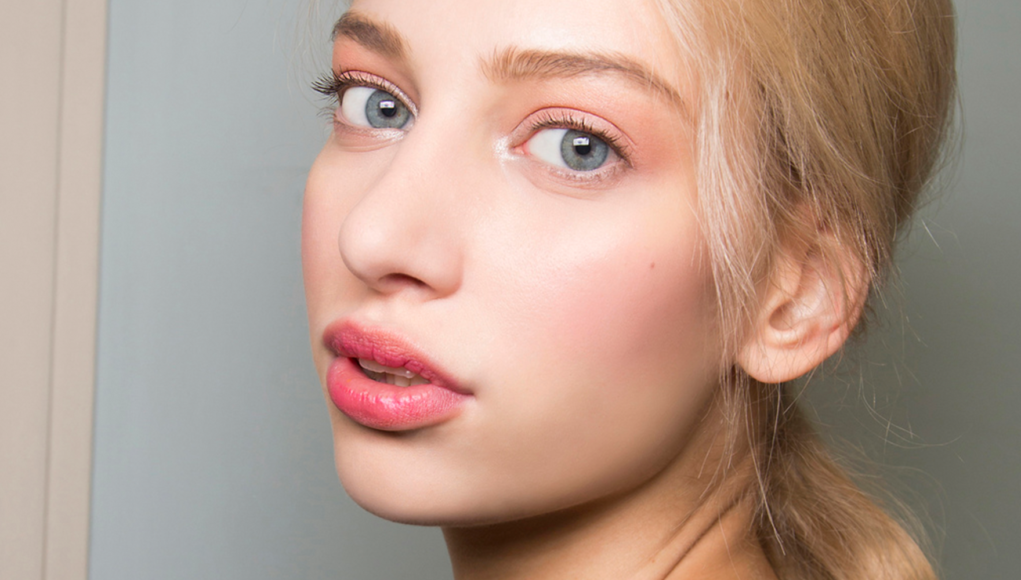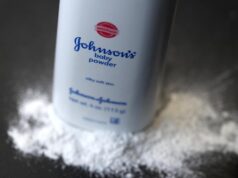If you’ve spent more than five minutes on the internet, uh, ever, you’ve likely heard of Curology before, whether it was from a before-and-after photo on your IG, or an influencer review on your TikTok, or just a straight-up ad on your browser. Curology, FYI, is an online service that gives people a way to get prescription skincare products and dermatologist advice without having to go to the doctor’s office. Which, especially in the last year, has been major.
I, someone with acne, melasma, clogged pores, fine lines, and nothing to lose, decided to give the skincare service a try myself back in February 2020 and review it for y’all to see if it was genuinely worth the hype, because usually, if something sounds too good to be true, it probably is—and I’m often the one to point it out (sry not sry).
But despite my major skepticism in the beginning, I’ve loved Curology so much that I’m still using it today, almost a year and a half later, which has even surprised me. Ahead, I’ll fill you in on the first 60 days (pictures and all) of using Curology, and my experience during the last 16 months of continued daily use. But before I get into my Curology reviews (yep, plural), let’s go over what it is and how it works exactly.
Curology is an online service that pairs you with a medical provider to create custom prescription creams for your skin needs. The process is as streamlined and simple as it gets: Submit photos of your face, take an online skin assessment, then get matched with a licensed medical provider (yes, it’s a real, living, breathing person) who cocktails a prescription cream to help with your specific skin concerns, primarily focused on acne. Within a few days, you’ll receive a personalized treatment plan and your prescription in the mail.
Now, a little bit about those prescription creams. The custom formulas combine three of the following ingredients, depending on what your skin needs:
The brand now also offers a prescription dark spot corrector for melasma and hyperpigmentation, which follows the same format as the original custom cream and is made from a combination of three of the following:
As your skin changes, you can work with your provider to adjust your formula and ask them any questions you have along the way.
According to David Lortscher, MD, board-certified dermatologist and CEO of Curology, all of your direct medical care is done by nurse practitioners (NPs) and physician assistants (PAs), but Curology also has dermatologists on staff who are responsible for training and overseeing NPs and PAs and answering questions for them. So no, you’re not actually working closely with a board-certified dermatologist (which can be a con), buuuut you also don’t need to physically go into an office, either (which can be a pro).
Depending on what you want, Curology can cost anywhere from $24.90 to $59.90, and it doesn’t accept insurance. When you’re starting out, you get a one-month free trial of your custom formula or the dark spot formula (you just gotta cover the $4.95 shipping and handling fee).
After that, the cost totally depends on what you order, like whether you’re getting a single small bottle of your custom mix ($24.90), or a larger two-month supply ($39.90), ooor if you’re also adding on a gentle cleanser, a moisturizer for your skin type, and your custom mix altogether ($59.90).
If (and only if!) you subscribed to receive the large custom formula, you can also throw in a bottle of the acne body wash ($18 per shipment) and some pimple patches ($4.95 per shipment). Unfortunately, the add-ons are only available with a purchase of the large custom mix, but that’s the best part (hello, it’s made for you), so you’re going to want it anyway.
If your Curology cream has new active ingredients in it that you’ve never used before (like retinoids or acids), then yes, your skin might “purge,” aka temporarily break out while your skin adjusts to the new exfoliating ingredients. But! It doesn’t happen for everyone. “We see purging in a very small amount of people, and the reason we do is because we have the philosophy of starting people out with a really gentle formulation,” says Dr. Lortscher.
What that means is that although it might take you a little bit longer to reach your skin goals (since your custom mix is lower-strength at first), you’re also less likely to go through the experience of your skin getting “worse” before it gets better. Pick your battles.
As laid out in the guide to Your First Weeks on Curology, which I clung to every night before bed those first two weeks, dryness, mild irritation, redness, flaking, and temporarily worsened breakouts (aka purging), are all normal things to experience, particularly if your formulation includes tretinoin (hi, mine). Dr. Lortscher recommends talking to your provider if you experience any discomfort to discuss changing the strength of your formulation or the frequency of use.
One more thing to add about purging and red, irritated skin: You’re gonna want to hit pause on most other products while using Curology, at least for the first few weeks. While your skin adjusts to your new routine and prescription formula, it’s best to stop using products that contain other active or potentially harsh ingredients, like salicylic acid, benzoyl peroxide, glycolic acid, vitamin C, and physical exfoliators (face scrubs and facial cleansing brushes).
If your skin has adjusted swimmingly after a couple of weeks of your new routine, you can slowly start adding your old faves back into your routine (the slower, the lower the risk of irritation).
It absolutely can! …Buuuut it also might not, because that’s just how skincare products work, especially when you’re dealing with acne. “We use ingredients that can address any type of acne, whether it’s super mild or super cystic,” Dr. Lortscher says, “but that’s not to say we can successfully treat every type of acne.” Of course, every person’s situation is unique, and some may require treatments outside of topicals, and for that reason, everything is approached on a patient-by-patient basis.
Dr. Lortscher says although the time it takes to see results varies from 2 to 12 weeks, you should start to see some effects within six weeks. I tried it for 60 days initially before making any judgments, but I started seeing my skin look clearer and brighter in the first three weeks. As for my hyperpigmentation, Dr. Lortscher says it could take six months before I started to see results. Good thing I’m more patient now than I was at age 13 when my skin first started rebelling.
A little background: I’ve gone to derms inconsistently throughout my life, partly because they’re expensive, partly because they’re hard to get an appointment with (I once had to wait six freakin’ months), and partly because there are so many over-the-counter products with pretty packaging that I’d rather try than the medicinal-looking prescriptions you get from the derm, TB totally H.
But obviously, my approach to skincare hasn’t been working or I wouldn’t be here in my late 20s still talking about my zits. Thanks to oral prescriptions, I now have my major breakouts under control, but I still deal with everyday whiteheads, blackheads, and hyperpigmentation. So basically, I was down for some help.
The only way to describe my relationship with Curology is to compare it to the best friend you didn’t super like at first but now you’re obsessed with. Like, sometimes first impressions aren’t great, and people (or in this case, products) need time to grow on you.
It all started with an online skin assessment. The questionnaire asked me what I was looking to improve and gave me six options to choose from: breakouts, clogged pores, dark spots, firmness, texture, wrinkles. I chose all of them (lol). It then asked about my skin type, health history, any products I’ve tried in the past, and prescriptions I’m currently taking.
My only concern? The questionnaire was a little too brief and impersonal for someone as obsessed with talking about their skin as I am. I had the option to leave an additional note at the end of the assessment, which I used to write a dissertation nitpicking my face. And for someone who has literally no idea what’s wrong with their skin or is a first-time skincare user, the process is definitely not as thorough as it would be with an in-person dermatologist appointment.
I also had to send along a few photos of my face. And, as if my skin knew I’d be taking a photo of it to blast it on the internet, it ended up looking uncharacteristically good on the day I took my “before” photo at the start of the experiment. Even still, you could see I had hyperpigmentation and congestion in my T-zone.
Anyone with acne knows how annoying it is to wait for help, so I was pumped when it only took three days from the time I submitted my skin assessment and photos to receive my custom prescription and treatment plan in the mail. Less than 24 hours after completing the questionnaire, I was matched with a provider (hi, Sarah!) and told of my prescription custom formula, which was made of three ingredients to help with acne and aging: .01 percent tretinoin, 2 percent azelaic acid, and 4 percent niacinamide.
As directed by my provider, I stopped using every other product of mine (even makeup, although I didn’t have to), and limited my routine to just a gentle cleanser, moisturizer, my prescription cream, and a sunscreen. I started out applying the prescription three days a week for the first two weeks, then bumped it up to every other day for another two weeks. After the first month, I started applying it every night. My skin peeled a lot in the beginning, so I found it worked best for me to mix my moisturizer with the cream before applying it to my face.
I’ll spare you 60 days’ worth of details (you can scroll through the pictures for the play-by-play), and skip to the final thoughts: Overall, lots of pros and very few cons. Did my skin clear up overnight? No. It took time and a consistent routine to get clearer skin, and after 60 days, I was better off than when I started, but still had some work to do on my hyperpigmentation.
It’s been a year since I opened my first box of Curology (actually, a year and four months if we’re counting), and I’m still a devoted user, even if it didn’t magically fix my skin forever. A few weeks after my 60-day review, I got a smattering of cystic zits on the lower half of my face—hormones, ty—and six month later, my face had another freakout in the form of small bumps everywhere.
But in both instances, I was able to reach out to my care provider, who got back to me within 24 hours (even on a weekend!) with advice, explanations, and recommendations for additional non-Curology products to help with what we figured out was mask acne and fungal acne. Not only that, but they reviewed photos and asked a number of questions to decide on a new custom formula to address my current skin concerns until I was back on track.
Originally, I was attracted to Curology because it took the guesswork out of a skincare routine and reduced it to just three easy steps with fragrance-free and prescription-grade formulas. But since quarantine, I actually feel like the reason I like Curology so much and have stuck with it is because I know someone is available to listen to me and provide a plan of action when I’m freaking out about my face. Anyone experiencing any kind of skin thing knows how isolating it can feel, and it was comforting to know that I wasn’t alone.
Maybe one day (maybe) I’ll grow out of acne completely and can move on to prevention and fine-tuning my skin, but in case that day never comes, it’s nice to know that my Curology mix (and Sarah) will be there to adjust to my changing skin needs. And yes, I know I sound like an infomercial here (not even slightly sponsored, promise! But, um, feel free to pay me Curology 😎); I’m really truly just a big fan of it.
Although Curology is a good option for those who don’t have access to a dermatologist, it doesn’t replace the need for seeing a dermatologist in person. Simply put, a dermatologist (who isn’t associated with a brand or product) will have access to all of the ingredients, prescriptions, and in-office treatments that can address and fix significantly more skin issues than Curology can.
So for me, I’ll still be making in-person visits for skin-cancer screenings and for in-office treatments. But if you’re someone who is just seeking guidance on choosing skincare ingredients that work for your specific, mild skin concerns? 10/10 would recommend Curology.











